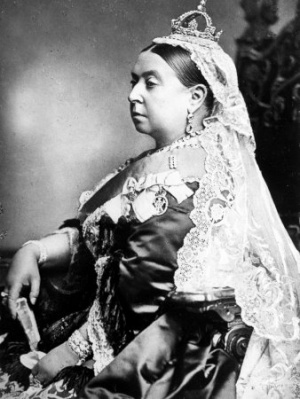Difference between revisions of "Jubilee Plot"
m (t) |
m (Peter moved page The Jubilee Plot to Jubilee Plot over redirect: remove definate article) |
(No difference)
| |
Revision as of 10:22, 11 February 2016
 Queen Victoria in her Golden Jubilee year 1887 | |
| Date | 1887/06/20 |
|---|---|
| Perpetrators | Francis Millen, Thomas Callan, Michael Harkins |
| Type | |
| Description | The attempt by Irish nationalist patsies to assassinate Queen Victoria and her Cabinate during her Golden Jubilee thanks giving service at Westminster abbey on 20 June 1887 |
The Jubilee Plot was the most serious of eight failed assassination attempts on Queen Victoria during her long reign. It was blamed on Irish Nationalists and was allegedly intended to blow up Westminster Abbey, Queen Victoria and half the British Cabinet during her Golden Jubilee thanksgiving service, on 20 June 1887.
A classic False flag
Some 125 years later it can be seen to have the hallmarks of a classic False flag event: loud-mouthed, angry young men provoked, steered and facilitated by the Security Services, into a dastardly plot which could be interdicted in the nick of time (or not as circumstances may require) and used by the State to incite popular sentiment to its purpose-du-jour, in this case to derail moves toward Irish home rule.
Patsies, setup, sting, propaganda
The organizer of the assassination attempt was said to be Francis Millen, a member of The Irish Brotherhood (Clan na Gael). But it was admitted that he had been a spy for the British authorities for several years (from 1885 under Edward Jenkinson of the Home Office with the approval of the Prime Minister, Robert Cecil, 3rd Marquess of Salisbury), and had been encouraged by them to proceed with the attempt, "to draw in more Fenians, who could then be captured".[1]
In June various newspapers reported that a plot to assassinate the Queen with bombs planted in Westminster Abbey had been discovered. In October 1887, a recently deceased American, Joseph Cohen, was declared by the Assistant Commissioner of the Police, James Monro, to have been the financier of the plot; he had been visited by two Irishmen, Thomas Callan (Alias Thomas Scott) and Michael Harkins (alias Harry Scott), who were arrested and charged with bringing dynamite into the country; both had been followed by the police ever since their arrival in Britain in June 1887. At their trial, Monro exposed Millen as the organizer of the plot, but Millen was allowed to escape to the USA where he died under mysterious circumstances. Callan and Harkins were sentenced to fifteen years each in prison.
Earlier in the year The Times had begun publishing a series of features called Parnellism and Crime. The bombers were linked, by letters, to Irish Parliamentary Party leader Parnell and other nationalist Irish MPs. The letters had been supplied by a Dublin journalist, Richard Pigott, purportedly showing that Parnell had approved of violent methods by extremist nationalist elements. The letters were shown to be forgeries that had been written by Pigott and sold to The Times. The case against Parnell then collapsed. Pigott committed suicide and in a subsequent libel action The Times had to pay Parnell £5,000 damages.
In his book Fenian Fire: The British Government Plot to Assassinate Queen Victoria British journalist Christy Campbell relates that Millen had been recruited by the British government "to stir the Fenians into bombing Britain – a scheme designed to discredit the Home Rule movement". Campbell further claimed that Millen was hired with the approval of the Conservative leader, Lord Salisbury, the Prime Minister.[1]
Sources
- ISBN 0007104839 , Fenian Fire: The British Government Plot to Assassinate Queen Victoria. Christy Campbell, London Harper Collins. 2002.
- The Prime Informer: A Suppressed Scandal. Leon O’Broin, London: Sidgwick and Jackson, 1971
Notes
- ↑ a b When the prime minister plotted to kill the queen - Andrew Roberts. The Telegraph 19 May 2002